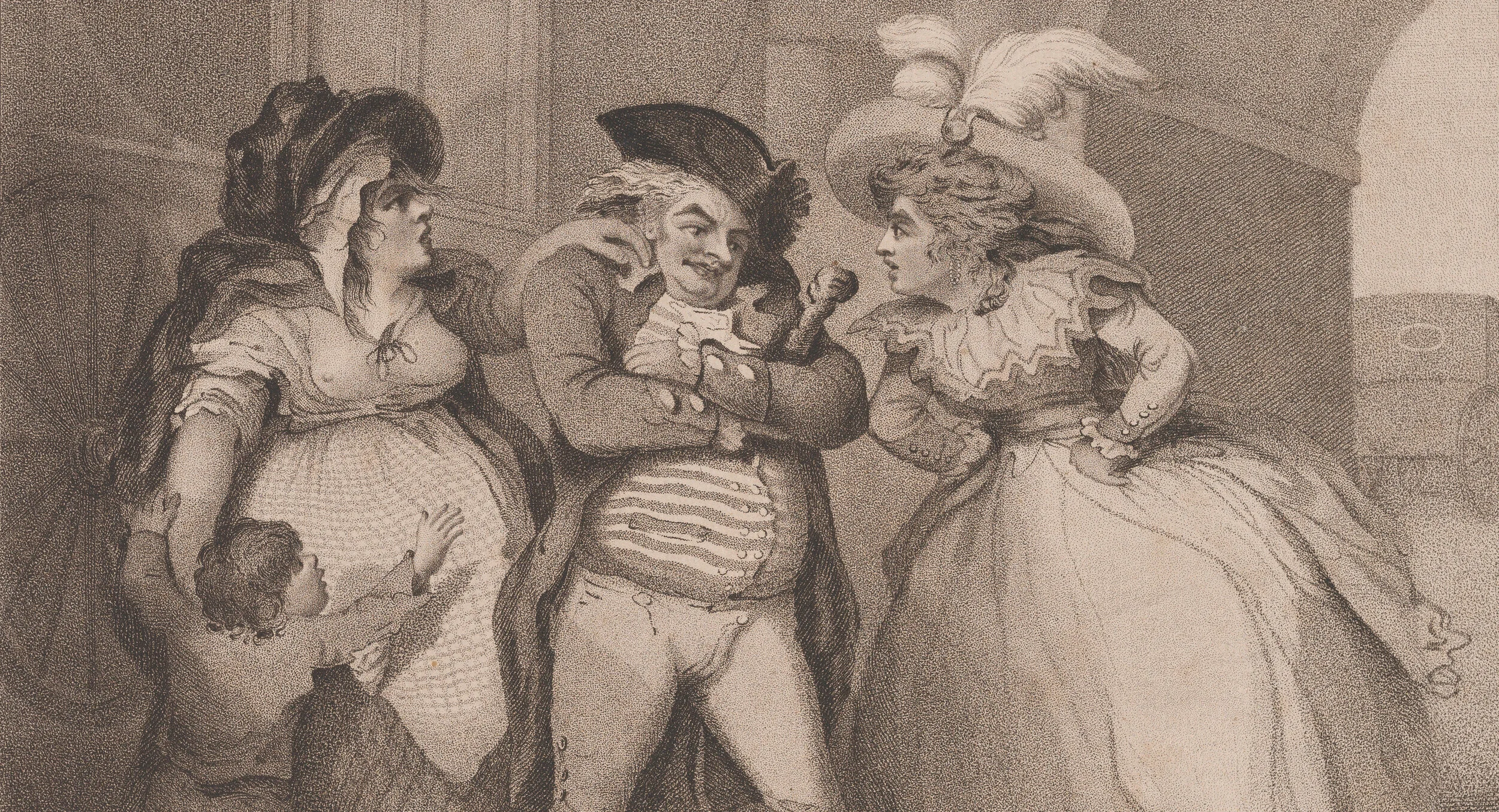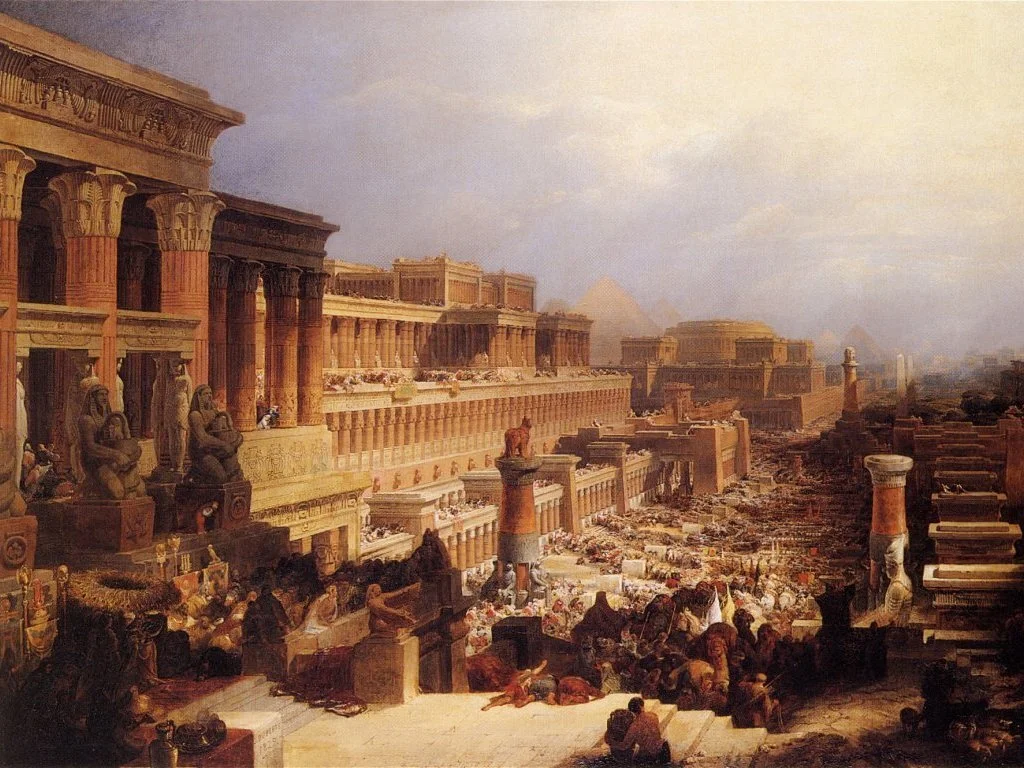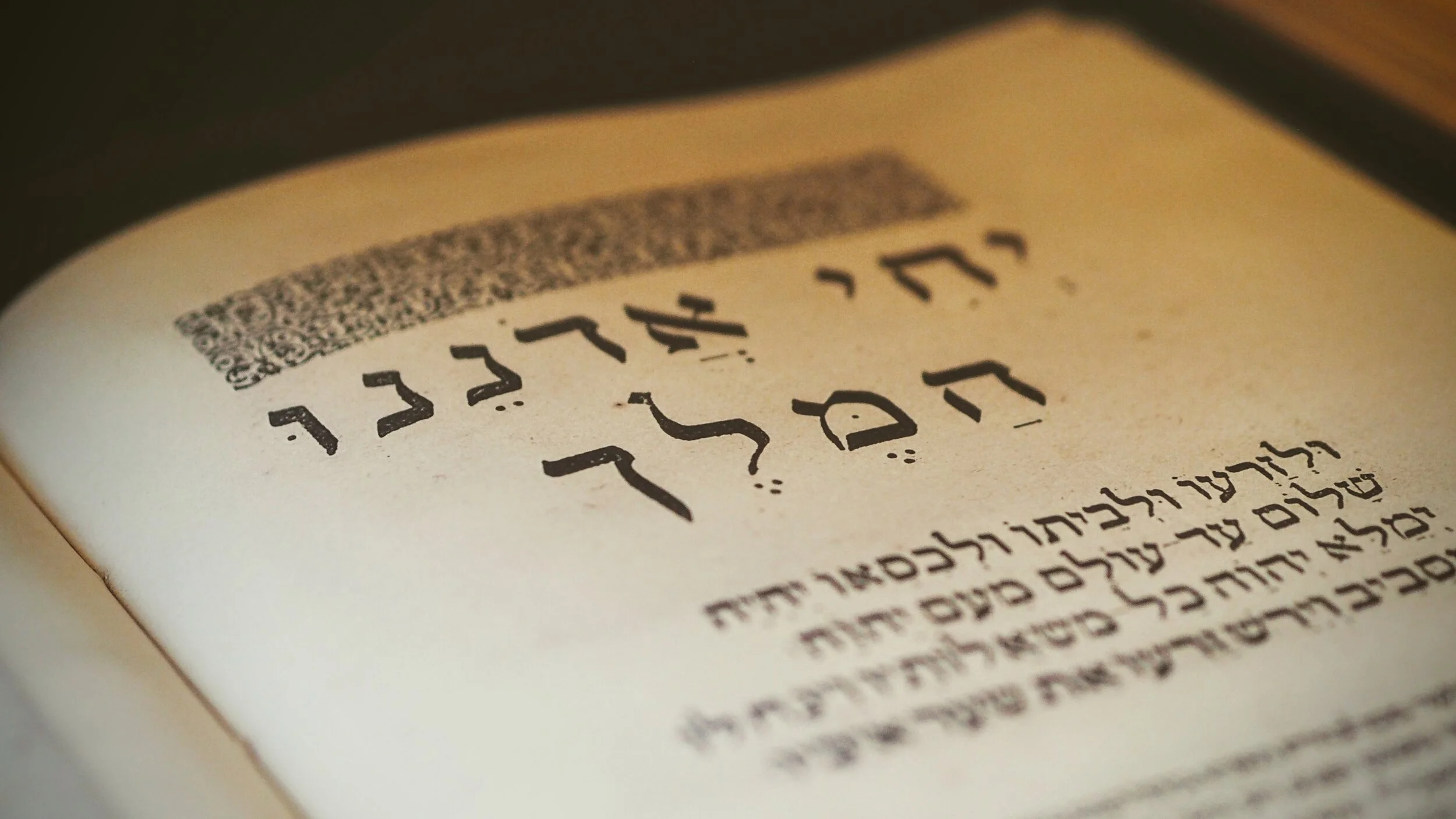Author: David Wilber
Jubilees, sometimes called Little Genesis,[1] is a fascinating book that provides a window into the world of Second Temple Judaism. Like 1 Enoch, Jubilees offers valuable insights into the beliefs and practices of some Jews during the time of the apostles, and it is worth reading for its historical value.
However, instead of appreciating it for what it is, a few teachers on the Internet exaggerate the significance of Jubilees. For instance, some claim that Jubilees is inspired by God and should be considered Scripture.[2] The Eth Cepher, an amateur Bible translation (I use the word “translation” extremely loosely), goes so far as to include Jubilees, along with 1 Enoch and Jasher, in its collection of “books of sacred scripture.”[3]
Elevating Jubilees to the status of the Torah and Prophets presents numerous theological problems. This article provides an overview of the book of Jubilees and explains why it is not considered Scripture.
Jubilees: An Overview
Jubilees portrays itself as divine revelation bestowed upon Moses during his initial forty-day sojourn atop Mount Sinai (Jub 1:1-28; cf. Exod 24:12-18). In the first chapter of the book, God commands an angel to read aloud to Moses the contents of celestial tablets, which document biblical history spanning fifty “jubilees” (periods of forty-nine years), starting with creation and ending with a prediction of Israel’s settlement in the land at the conclusion of these fifty Jubilees (Jub 1:26-28). The remainder of the book consists of the angel reciting to Moses the words inscribed upon the celestial tablets.[4]
Essentially, the book of Jubilees is a rewriting of Genesis and the first half of Exodus. The unknown Jewish author emphasizes many of the same doctrines later found in the sectarian Qumran literature, which suggests that he may have belonged to the same “stream of tradition” as the sect that settled in Qumran.[5] In particular, the author promotes sectarian interpretations of various biblical laws, specifically those concerning the biblical calendar.[6] Moreover, he admonishes his Jewish readers to entirely separate themselves from the Gentiles, whom he regards as impure and destined for annihilation.[7]
When Was Jubilees Written?
Did Moses himself write the book of Jubilees? Did an angel reveal the contents of “celestial tablets” to him, as the book of Jubilees claims? The evidence does not support this notion.
The current scholarly consensus is that Jubilees was written sometime in the second century BC.[8] The book fits well within this historical setting, as it contains textual elements that reflect the Hellenistic period. For instance, it is plausible that the author’s strong opposition to nudity (Jub 3:31; 7:20) was a response to Jews embracing nude athletics, which became prevalent following the establishment of the Greek gymnasium in Jerusalem in 175 BC (See 1 Macc 1:14-15; 2 Macc 4:9-17). According to the author of Jubilees, the celestial tablets command Israel not to uncover themselves “as the nations uncover themselves” (Jub 3:31). As James VanderKam remarks, “[T]he nudity in question had to be that of the Greeks; it caused controversy just after 175 BCE and is not known to have done so at other times…this is the only time when, according to the sources, public nudity as practiced by the nations was a problem that elicited condemnation.”[9]
Additionally, the sources used by the author of Jubilees indicate a mid-second-century date. For instance, in Jubilees 7:21-25, the names assigned to the three classes of giants are derived from the Book of Dreams,[10] a section of 1 Enoch (1 En 83-90) dated to the second century since it includes allusions to the battle of Bethsur that occurred in 164 BC.[11] The author of Jubilees also draws from other Enochic writings, such as the Astronomical Book, the Book of the Watchers, and the Epistle of Enoch. Finally, the author quotes or alludes to passages from the biblical books of Isaiah, Amos, and the Psalms. All these sources were written long after the time of Moses.[12]
Despite the textual evidence pointing to a later date, some claim that Jubilees must have been written prior to the seventh century BC. Sean Griffin asserts that Moses wrote Jubilees and that it is “inspired Scripture.”[13] He cites the discovery of a seventh-century plaque that he claims represents the calendar in Jubilees. The artifact that Griffin cites is a polished bone plaque. The plaque consists of four rows of holes, with the leftmost row having twelve holes and the other three rows each having ten holes. According to Israeli archaeologist Avraham Biran, “Perhaps a peg was moved each day of the month from one to the next of the 30 holes arranged in three rows of ten holes each. In the fourth row of 12 holes, another peg might have been moved to mark off the completion of each month.”[14] The top of the plaque has three additional holes that “may denote some division of the year.”[15]
Photo © The Israel Museum, Jerusalem, by Ardon Bar-Hama
There are several problems with Griffin’s claim that this plaque authenticates the antiquity of the calendar in Jubilees. First, the notion that this plaque functioned as a calendar is speculative. As Biran notes, “Scholars are not sure, however, that the plaque is a calendar.”[16] Archaeologists have also suggested that the plaque may have been a game board.[17]
Second, assuming that the plaque is indeed a calendar, it does not match the calendar articulated in Jubilees. According to Jubilees, a year consists of 364 days, with twelve months consisting of thirty days each, and an extra four days added in the first, fourth, seventh, and tenth months (Jub 6:23-38). The four additional days in the Jubilees calendar introduce four separate, thirteen-week seasons in the year.[18] Since the Jubilees calendar contains four seasons, one would expect the top of the plaque to contain four additional holes—and yet it has only three holes. The math does not add up. In fact, the number and arrangement of holes on the plaque’s surface appear to align more closely with the Egyptian calendar, which consisted of twelve thirty-day months.[19] However, unlike the Jubilees calendar, the Egyptian calendar had three seasons, each comprising four months, which would potentially correspond to the three holes on the top part of the plaque.[20]
Third, even if this plaque is a calendar, the existence of this artifact does not prove that Jubilees was written prior to the seventh century BC. It merely indicates that a calendar system resembling the one described in Jubilees (though not exactly) was in use during the seventh century BC. Furthermore, despite Griffin’s assertion that one finds such a calendar “only” in the books of Jubilees and 1 Enoch,[21] the ancient Egyptians are known to have used a calendar with twelve thirty-day months. The fact that the author of Jubilees used a similar calendar to the ancient Egyptians provides no meaningful information about when the book of Jubilees was written.
In sum, there is no good reason to suppose that Jubilees was written during the time of Moses. The widely accepted dating of Jubilees to the second century BC is more consistent with the textual evidence. Moreover, the seventh-century plaque cited by proponents of an earlier date, if interpreted as a calendar, does not match the calendar system described in Jubilees—and even if it did, it has no relevance regarding the date of Jubilees.
Jubilees and the Biblical Canon
When it comes to whether Jubilees should be considered “Scripture,” Griffin and the editors of the Eth Cepher find themselves in the extreme minority. As early as the first century AD, historical sources indicate that the accepted biblical canon among Jews and Christians excluded Jubilees. For instance, writing in the 90s AD, Josephus confirms that the threefold canon (Law, Prophets, and Writings), which is referenced in the New Testament (Luke 24:44-45) and other early Jewish literature (e.g., prologue to Sirach), comprises twenty-two books (Against Apion 1.38),[22] and matches the contents of the Christian Old Testament canon.[23] Jubilees was not part of this collection.[24] Similarly, although they held Jubilees in high esteem, evidence suggests that even the Qumran Community used the standard threefold, twenty-two book canon of their day.[25] Throughout history, the vast majority of Jewish and Christian communities have not considered Jubilees Scripture.
Nevertheless, Griffin appeals to the Ethiopian Orthodox Church to support his view that Jubilees is inspired. Griffin asserts that the Ethiopian Christians include Jubilees in their canon, which he considers a significant point.[26] However, Griffin’s understanding of the perspective of the Ethiopian Orthodox Church regarding Jubilees’ canonical status is not entirely accurate. As Roger Cowley remarks, the Ethiopian Orthodox Church’s “concept of canonicity is regarded more loosely than it is among most other churches.”[27] Daniel Assefa, a professor of Scripture in the Ethiopian Orthodox tradition, echoes Cowley:
One can say that Enoch and Jubilees are in the canon, although we need to be careful in our use of the term canon. The concept of canon is not as rigid as in the West. You have various lists and no one seems to be worried or to be preoccupied to have something definitive or normative.[28]
Furthermore, as Assefa indicates, there are multiple “canons” or “lists” in the Ethiopian Orthodox tradition, and not all of them include Jubilees.[29] Scholar of Ethiopian liturgy Emmanuel Fritsch writes, “My understanding is that there is no canon in the generally received sense; rather, there are various codices which include various books, not always the same.”[30] Notably, in 1983, the Ethiopian Orthodox Church Holy Synod in Abbis Ababa published the book titled A Short History, Faith and Order of the Ethiopian Orthodox Church. In the section titled “Holy Books of the Old Testament,” neither Jubilees nor 1 Enoch are listed.[31] So, although the book of Jubilees holds significance within the Ethiopian Orthodox tradition, it cannot be said that it is considered inspired in the same manner as the Torah or Prophets.
Significantly, the author of Jubilees himself may attest to the existence of the twenty-two-book canon that Josephus later mentions in his work Against Apion. Jubilees 2:23 mentions twenty-two acts of creation and twenty-two generations from Adam to Jacob. Later Greek writers quote this verse and include two additional sets of twenty-two items: twenty-two Hebrew letters and twenty-two sacred books.[32] For instance, Georgius Syncellus explicitly cites Jubilees as his source when referencing these two additional sets of twenty-two items:
Altogether there are twenty-two works, equal in number with the twenty-two letters of the Hebrew alphabet, and the twenty-two books of the Hebrew Bible, and the twenty-two generations of patriarchs from Adam up to Jacob, as it is reported in the Little Genesis [i.e., Jubilees], which some say is also a revelation of Moses. (Syncellus, Chronographia 1.5)
Based on the quotations in later Greek writings, some scholars propose that the original text of Jubilees may have included the reference to twenty-two sacred books.[33] If this proposal has any validity, then the author of Jubilees himself did not consider his book to be on par with Scripture.
Jubilees Contradicts the Teachings of Scripture
Another important reason to reject Jubilees as inspired Scripture is that it contradicts the Bible in numerous and significant ways. Perhaps the biggest conflict between Jubilees and Scripture is Jubilees’ extremely negative attitude toward Gentiles. In Jubilees, God himself created spirits to rule over the Gentiles and lead them away from following him (Jub 15:30-32). Jubilees also prohibits Jews from having fellowship and sharing meals with Gentiles (Jub 22:16) and forbids Gentiles from keeping the Sabbath (Jub 2:31).
These anti-Gentile sentiments in Jubilees are opposed to what Scripture reveals about God’s heart toward the Gentiles. In Scripture, instead of preventing the Gentiles from following him, God repeatedly calls upon the Gentiles to repent, worship him, and keep his Sabbaths (e.g., Isa 56:1-8). Moreover, the prohibition against associating with Gentiles contradicts God’s expressed plan for Israel, which was to bless and disciple the Gentiles (Matt 28:19-20). The narrative in Acts 10-11 of God instructing Peter to visit Cornelius explicitly undermines Jubilees’ command against eating with Gentiles.
Another notable contradiction between Jubilees and Scripture is their opposing calendars. In Scripture, the calendar for determining festival dates is based on the observation of the moon; in Jubilees, observing the moon to determine festival dates is explicitly condemned (Jub 6:36). Consequently, Jubilees prohibits one from observing the festivals in the manner prescribed by the Torah.
Other contradictions include the fact that Jubilees ascribes alternative, pre-Exodus significance to the festivals (Jub 6:17; 16:21-31; 32:27-29; 34:18-19). Jubilees also prescribes additional Sabbath restrictions that are not found in the Torah, such as prohibiting a man from having physical intimacy with his wife on the Sabbath (Jub 50:8), which conflicts with the Sabbath’s overall symbolism and purpose as reflected in Scripture.[34]
Additional Problems
The notion that the book of Jubilees is inspired leads to additional theological and practical problems. First, Jubilees states that all the descendants of Lot are destined for complete annihilation (Jub 16:9). The problem is that Lot’s descendants include the Moabites and Ammonites (Gen 19:37:38). Thus, Jubilees’ proclamation of destruction for Moab and Ammon contradicts the Prophets’ hope of salvation and restoration for a remnant of these peoples in the latter days (Jer 48-49; Isa 15-16). Worse still, when one considers that Ruth was a Moabite, Jubilees’ condemnation of Lot’s descendants would extend to her, to her grandson King David, and to the Messiah himself (Matt 1:5).
Second, in Jubilees, fasting on the Sabbath is strictly forbidden and punishable by death (Jub 50:12-13). This presents a problem as both Moses (Exod 34:28) and the Messiah (Matt 4:2) fasted for forty consecutive days, including on the Sabbath, which means they violated the command in Jubilees.
Third, the calendar articulated in Jubilees is a flawed system because it lacks a method of intercalation. To explain, a year is 365 days, but in Jubilees a year is only 364 days. So, over time, the festivals marked according to the Jubilees calendar occur earlier and earlier in the year until they don’t align with harvest time at all. This poses a problem because the festival of Sukkot, for example, is supposed to be celebrated “after you have gathered in the harvest of your land” (Lev 23:39). However, if one keeps the Jubilees calendar, then within thirty years, Sukkot will arrive so early in the year that no such harvest will be available. In contrast, the Torah’s calendar does not have this problem because a year does not have a fixed number of days, so one can simply add a month to the end of the year whenever necessary to solve this problem. Jubilees lacks such a solution. Eventually, on the Jubilees calendar, Sukkot would be observed in spring, while Passover would be kept in the fall, completely erasing the symbolic connection between these festivals and their respective seasons.
Conclusion
This article has highlighted some of the reasons that the vast majority of Jewish and Christian communities throughout history have not considered Jubilees Scripture. Despite Jubilees’ claim that it was written in the time of Moses, the evidence indicates that Jubilees was actually written in the second century BC. Moreover, Jubilees contradicts the teachings of Scripture, particularly in its negative attitude toward Gentiles and its alternative calendar system. Accepting the idea that Jubilees is inspired also raises significant theological and practical problems. While Jubilees is valuable from a historical perspective, it should not be given the same status as Scripture.
[1] David J. Zucker, “A Jubilee (50) of Fascinating Facts about the Book of Jubilees,” Biblical Theology Bulletin, Vol. 50, no. 2 (2020), 93.
[2] See Sean Griffin, “Actually Testing The Book Of Jubilees – Milk & Meat Livestream!” YouTube, June 19, 2020: “Jubilees is inspired Scripture.”
[3] Stephen Pidgeon, “87 Books of Sacred Scripture,” Cepher Publishing Group, accessed June 14, 2023, https://www.cepher.net/87-books-of-scripture.aspx. For my work on 1 Enoch, see my video The Truth About the Book of Enoch and my article Who is the Son of Man in 1 Enoch 71:14?. For my work on Jasher, see this video that I did with Inspiring Philosophy.
[4] For a summary of Jubilees, see James C. VanderKam, “Jubilees, Book Of” in Anchor Yale Bible Dictionary Vol. 3: H-J (Yale University Press, 1992); James C. VanderKam, Jubilees 1: A Commentary on the Book of Jubilees Chapters 1-21, Hermeneia (Minneapolis: Fortress, 2018), 1.
[5] VanderKam, Jubilees 1, 39.
[6] Michael P. Theophilos, “The Portrayal of Gentiles in Jewish Apocalyptic Literature,” Attitudes to Gentiles in Ancient Judaism and Early Christianity (New York: T&T Clark, 2013), 78.
[7] VanderKam, Jubilees 1, 65. For a survey of the Qumran literature that highlights the community’s perspective on Gentiles, see John J. Collins, “Gentiles in the Dead Sea Scrolls,” Attitudes to Gentiles in Ancient Judaism and Early Christianity (New York: T&T Clark, 2013), 46-61.
[8] For a comprehensive overview of the scholarly proposals regarding the date of Jubilees’ composition, see VanderKam, Jubilees 1, 25-38.
[9] Ibid., 33.
[10] See Ibid., 343: “Noah refers to the birth of the Nephilim and then distinguishes three kinds of beings, all of which he says were different, one from the other: giants (yarbeh), naphil, and elyo…The Animal Apacaplypse also speaks about three kinds of giants: using its own special imagery, it calls them elephants, camels, and asses (1 Enoch 86:4; 87:4; 88:2; 89:6)…underlying the labels are wordplays that can be explained from the Aramaic nouns in the original text of 1 Enoch.”
[11] For more on the dating of the Book of Dreams, see J. T. Milik, The Books of Enoch: Aramaic Fragments of Qumran Cave 4 (Oxford: Clarendon, 1976): 44-45.
[12] For a comprehensive overview of the sources used in Jubilees, see VanderKam, Jubilees 1, 82-98.
[13] Griffin, “Testing.”
[14] Avraham Biran, “And David Sent Spoils…to the Elders in Aroer” (1 Samuel 30:26-28), Biblical Archaeology Review, Vol. 9, Issue 2 (March/April 1983), 10.
[15] Ibid., 4.
[16] Ibid., 10.
[17] The Israel Museum, “Game board or calendar,” IAA: 1985-45, https://www.imj.org.il/en/collections/371378-0.
[18] See VanderKam, Jubilees 1, 44-45: “The angel reveals to Moses that there are four seasons in a year, each introduced by a day that memorializes an event during the year of the flood (1/1, 4/1, 7/1, 10/1); each of these seasons lasts thirteen weeks, yielding fifty-two in a year (6:23, 29, 30). The year consists of 364 days (6:32, 38).”
[19] For more on the Egyptian calendar, see Francesca Rochberg-Halton, “Calendars (Ancient Near East)” in Anchor Yale Bible Dictionary Vol. 1: A-C (Yale University Press, 1992).
[20] See Nili Fox, “A Bone-Carved Calendar” in Tel ‘Aroer: The Iron Age II Caravan Town and the Hellenistic-Early Roman Settlement (Jerusalem: Nelson Glueck School of Biblical Archaeology, 2011), 256: “An intriguing possibility, which builds on Petrie’s suggestion that the Tel el-Farah (S) calendar reflects an Egyptian system, would lead us to infer that the ‘Aroer calendar’s three top holes correspond to the three Egyptian seasons of the civil calendar used in dates: зḫt, ‘inundation,’ prt, ‘growing of crops,’ and šmw, ‘harvest.’ Although Egyptian date formulas typically refer to a month as the fiirst, second, third, or fourth within a given season, the year is recognized as being composed of 12 distinct months, each named. In theory, at least, the ‘Aroer calendar could have been designed as a composite calendar, to delineate both the seasons and the 12 months in the year.”
[21] Griffin, “Testing”: “The seventh century BC is when I showed you that archaeological evidence of them using a form of a calendar that we only find in the books of Jubilees and Enoch.”
[22] See William Whiston, trans., Flavius Josephus Against Apion, Vol. I, in Josephus, Complete Works (Grand Rapids: Kregel, 1960), 8: “We have but twenty-two [books] containing the history of all time, books that are justly believed in; and of these, five are the books of Moses, which comprise the law and earliest traditions from the creation of mankind down to his death. From the death of Moses to the reign of Artaxerxes, King of Persia, the successor of Xerxes, the prophets who succeeded Moses wrote the history of the events that occurred in their own time, in thirteen books. The remaining four documents comprise hymns to God and practical precepts to men.”
[23] The difference in the number of books between the Jewish and Christian OT canons arises from the fact that the Jewish canon combines certain books that are distinct in the Christian OT canon. In the Jewish canon, for instance, the Minor Prophets are regarded as a single book. Moreover, Josephus’s canon is thought to have combined Ruth with Judges and Lamentations with Jeremiah, which are separated in the modern Jewish canon listing of twenty-four books. For more on this, see Roger T. Beckwith, The Old Testament Canon of the New Testament Church (Grand Rapids: Eerdmans Publishing, 1985), 79-80, 120, 158, 185.
[24] Ibid., 78-80, 118-127, 235.
[25] Ibid., 364-365.
[26] Griffin, “Testing.”
[27] R. W. Cowley, “The Biblical Canon of the Ethiopian Orthodox Church Today,” Ostkirchliche Studien 23 (1974): 318-23.
[28] Cited in Leslie Baynes, “Enoch and Jubilees in the Canon of the Ethiopian Orthodox Church,” A Teacher for All Generations: Essays in Honor of James C. VanderKam Vol. 1 (Netherlands: Brill, 2012), 801-802.
[29] Ibid., 799-807.
[30] Ibid., 802.
[31] Ibid., 803.
[32] Epiphanius, On Weights and Measures 6; Isidore, Etymologies 16.26.10; John of Constantinople; Symeon Logothetes (See Beckwith, 236).
[33] See R. H. Charles, The Book of Jubilees (London: Adam and Charles Black, 1902), 17-18. VanderKam disputes this possibility and argues that these later writers added to the Jubilees text. See James C. VanderKam “Genesis 1 in Jubilees 2,” in Dead Sea Discoveries 1 (1994), 316.
[34] In opposition to the religious leaders’ extrabiblical Sabbath restrictions, Jesus affirmed that the Sabbath’s purpose was to bless humanity with rest and joy—it was “made for man” (Mark 2:27). The Sabbath was not intended to be an excuse for religious leaders to scold people for not conforming to man-made rules. For more on the Bible’s opposition to man-made restrictions and its emphasis on finding delight in the Sabbath, see David Wilber, Remember the Sabbath: What the New Testament Says About Sabbath Observance for Christians (Clover, SC: Pronomian Publishing, 2022) 35- 48, 141-145.
About David Wilber
David is first and foremost a passionate follower of Yeshua the Messiah. He is also a writer, speaker, and teacher.
David’s heart is to minister to God’s people by helping them rediscover the validity and blessing of God’s Torah and help prepare them to give an answer to anyone who asks about the hope within them (1 Peter 3:15)…
































